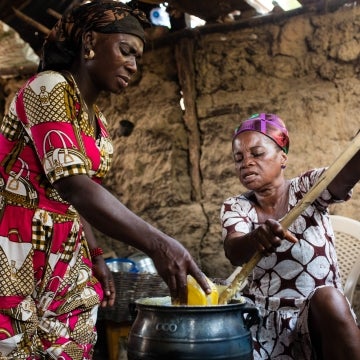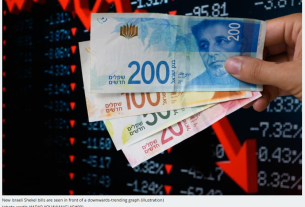As carbon markets evolve from niche climate interventions into a multi-billion-dollar industry, a critical truth is emerging: gender inclusion is no longer optional. It is essential to the permanence, equity, and scalability of carbon projects.
Integrating gender considerations into project design not only improves long-term outcomes – it is also increasingly recognized by standard-setting bodies as essential for credibility. Yet doing this requires more than good intentions—it demands practical mechanisms. Financial services are the bridge that can connect women, especially in low-income and climate-vulnerable settings, to meaningful participation and benefits in these markets.
Financial services as a gender-inclusive enabler in carbon markets
Carbon markets have the potential to fund not only emissions reductions but also development outcomes such as improved health and household wellbeing, access to new economic opportunities, livelihood adaptation, and women’s empowerment. However, women often face the same systemic barriers in accessing carbon markets as they do in accessing formal finance: limited asset ownership, lack of credit history, exclusion from decision-making, and time poverty. If these challenges aren’t addressed head-on, carbon projects may inadvertently perpetuate inequality.
Financial services—credit, savings, insurance, and digital payments—offer practical mechanisms to overcome these challenges. They make clean technologies more affordable, enable ownership of productive assets, and facilitate transparent benefit-sharing. They also enhance project credibility by demonstrating measurable development impact, particularly through women’s empowerment initiatives. This documented social impact creates valuable co-benefits that can be monetized in carbon markets; early evidence suggests that carbon credits with gender and social co-benefits may sell at a premium—up to 86% more.
Credit as an enabler for green asset ownership
One of the clearest examples of financial inclusion enabling gender impact comes from the Self-Employed Women’s Association (SEWA) in Gujarat, India. In the salt flats of the Little Rann of Kutch, SEWA is partnering with a carbon project developer, Value Networks Ventures, to help women salt farmers shift from diesel-powered to solar-powered water pumps—a transition that cuts emissions while reducing energy-related input costs.
The solar pumps represent a major investment for these households. To make them accessible, SEWA facilitated financing through a mix of bank loans and government subsidies. But this wasn’t just about affordability. Families were encouraged to register loans and assets in women’s names, enhancing women’s legal asset ownership and decision-making power. This strategic use of financial services transformed the intervention from a clean energy project into a vehicle for women’s economic empowerment.
Beyond energy transition, this initiative created employment for women technicians and established a solar park that generates off-season electricity sold back to the grid, addressing seasonal vulnerability in salt farming by providing a new source of income. All of this was underpinned by access to credit—without which, the transition would have remained out of reach.
Digital payments for transparency and control
In Rwanda, the Fair Climate Fund, in partnership with BioMassters and Fintech, is designing a pilot demonstrating how carbon markets can improve women’s agency in carbon projects by applying cash-back based on carbon income. Many peri-urban households in Rwanda rely on charcoal for cooking, with harmful consequences for health, forests, and household budgets. An improved stove is often too expensive. The pilot would provide financial services to women to purchase clean biomass stoves through affordable digital loans offered by the Fintech. The model anticipates that monthly fuel savings of 40% would allow women to repay loans easily, while simultaneously building formal credit histories—often for the first time.
Digital payments are central to the model’s success. A portion of the carbon revenue will be shared with women through digital payment for pellet purchase, incentivizing ongoing use of these fuel-efficient stoves. These direct digital payments create increased transparency in revenue sharing, giving women more control over income from their climate-positive actions. This pilot illustrates how fintech innovation and carbon finance can jointly enable women’s financial inclusion while accelerating clean technology adoption.
Women’s groups facilitate Inclusion
Of course, not all women can access individual financial products due to legal, geographic, or social constraints. In such cases, collective financial models like village savings and loan associations (VSLAs) and self-help groups offer a powerful alternative for women to pool resources and access credit.
A promising example is emerging from the West Africa Blue carbon project in Sierra Leone, which is focused on mangrove restoration. Through creating and strengthening VSLAs, the project aims to channel carbon credit revenues directly to women’s groups and other community organizations. These funds will boost household incomes and provide seed capital for livelihood diversification activities like beekeeping, aquaponics, and sustainable oyster farming. By investing in the expansion and digitization of these VSLAs, the project is laying the groundwork for formal financial inclusion—particularly for women traditionally excluded.
Building scale and gender impact through financial services
Despite strong examples, financial services remain underutilized in most carbon projects. Many rely on informal models that can only mobilize limited capital or fail to consider women’s specific financial needs. Projects often skip gender analysis altogether, missing key opportunities to make interventions inclusive and sustainable.
Three critical gaps persist, which CGAP is addressing through targeted solutions:
Lack of tailored financial products
Women need financial tools that align with their income patterns, asset bases, and time constraints. CGAP is piloting women-centric financial models in clean energy, cookstoves, and nature-based projects—including models that help build women’s credit histories (as demonstrated in Rwanda) and link informal savings groups to formal financial institutions (as seen in Sierra Leone).
Weak gender outcome measurement
Few carbon projects systematically track gender outcomes, and fewer still tie them to financial incentives. CGAP is helping to fill this gap by piloting rigorous measurement frameworks, including the W+ Standard, in partnership with SEWA. By quantifying impacts on income, assets, knowledge, and skills, this approach ensures that gender outcomes are visible and valued—and that a larger share of carbon revenues flows directly to women. This work is complemented by CGAP’s own WEE measurement framework, which offers a practical menu of tested indicators to evaluate changes in women’s agency, access, and resilience.
Disconnect between finance and climate actors
Carbon project developers rarely partner with financial service providers, leaving value untapped, particularly when investors lack explicit co-benefits requirements beyond mitigation. CGAP is addressing this by documenting and sharing lessons across sectors while convening diverse actors from financial services, climate finance, and development to build collaborative pathways. This includes brokering partnerships between carbon project developers and financial service providers to pilot innovative approaches.
By embedding inclusive financial services into carbon projects, CGAP is helping to ensure that women are not just beneficiaries but co-creators of climate resilience and economic opportunity. Unlocking gender impact in carbon markets starts with unlocking finance for women.



